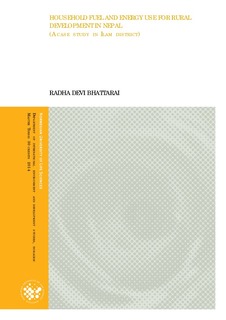| dc.description.abstract | In the past, the energy ladder was the main model for understanding changes in energy use. This model shows that as households income increase they will change to more efficient fuels. However, recent studies including my study show that culture, individual preferences, availability, efficiency, price and cost effectiveness also play vital role in determining energy and fuel choice. The research was conducted in two village development committee in Ilam district namely Barbote and Kanyam. The field work was conducted for two weeks from Feb. 1-15, 2013. The data were collected through structured questionnaire and key informant interviews. A total of 100 households were included. The households were selected basically on the availability of people in their house and snowball sampling. The research identified the household energy consumption pattern and the effects of economic. The main energy sources of the households were biomass, charcoal, electricity, biogas, candle and batteries. Biomass is widely used as almost 100% of HHs used it regardless economic status of the households. The research found that better off HHs consume almost all type of fuels and used various types of cooking stoves. Electricity was mainly used for lighting, communication and entertainment. Prices per kWh produced from different energy sources were compared. It was found that biomass and biogas are the cheapest fuels among these sources. The price per kWh produced from the biomass was just Rs. 1.25/kWh. The price of LPG, electricity and kerosene was in comparison Rs.7.7, Rs.9.7 and Rs.9.37 per kWh respectively. Biomass is highly used due to cultural preferences (alcohol making, milk boiling) and used for energy demanding task such as animal food cooking. The rural energy policy has also to be taken into consideration when analyzing the consumption pattern of the HHs. The rural energy policy is targeted with rural poor, ethnic group, disadvantaged and marginalized people. However, the policy implication did not seem fair due to political instabilisation of the country and absence of political leader of local representatives in the VDCs. Finally, introduction of biogas and improved cooking stoves can play an important role in order to save fuel wood and money. | nb_NO |
